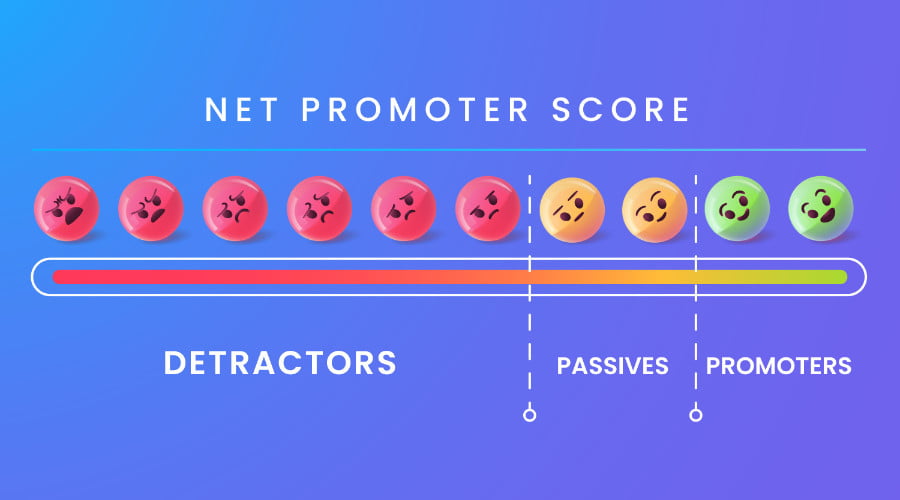
In today’s data-driven world, sentiment analysis constitutes a powerful tool for understanding public opinion, emotions, and attitudes towards various topics, products, or services.
In 2020, 64.2 zettabytes of data were created, captured, copied, and consumed globally. By 2025, global data creation will reach 180 zettabytes. Web scraping plays a crucial role in collecting the vast amount of data required for sentiment analysis, enabling organizations to access and analyze user-generated content from diverse online sources.
After reading this guide, you will learn the various web data sources and web scraping options for sentiment analysis, empowering you to make informed decisions and derive valuable insights.
What’s Data Scraping
Data scraping, also known as web scraping or screen scraping, is a technique used to extract data from websites, applications, or other digital sources.
The process typically involves downloading the HTML content of a web page, parsing it, and extracting the desired information into a structured format, such as a CSV, JSON, or XML file. You can do data scraping manually. But it’s more commonly automated using specialised software, scripts, or web crawlers.
Data scraping serves various purposes, including data analysis, machine learning, data mining, sentiment analysis, and competitive analysis. It can help you gather large amounts of data from different sources quickly and efficiently.
What’s Sentiment Analysis
Sentiment analysis, also known as opinion mining or emotion AI, is a subfield of Natural Language Processing (NLP) that aims to identify, extract, and analyse information, such as emotions, opinions, and attitudes, from text data.
You can use it to gauge public sentiment toward a specific topic, product, or service based on text data from web sources like social media, reviews, blogs, forums, and more.
Sentiment analysis classifies the sentiment expressed in the text as positive, negative, or neutral, though more advanced approaches can identify a range of emotions, such as happiness, sadness, anger, and fear.
There are various techniques to perform sentiment analysis, including rule-based, machine learning-based, and hybrid methods. Rule-based techniques often involve using predefined sets of rules and sentiment lexicons, while machine learning-based techniques rely on training models using labelled datasets.
Advantages of Sentiment Analysis
Sentiment analysis has many practical applications, including:
- Brand monitoring: Understanding consumer opinions about a brand or product to inform marketing strategies and improve customer satisfaction.
- Product or service reviews: Analysing customer feedback to identify areas of improvement and strengths on which you must capitalise.
- Social media monitoring: Tracking public sentiment on social media platforms to identify trends, potential crises or opportunities for engagement.
- Market research: Gaining insights into consumer preferences and opinions to inform business decisions.
- Political analysis: Assessing public opinion on political issues or candidates to inform campaign strategies or predict election outcomes.
Types of Sentiment Analysis

Here are the most common types of sentiment analysis, each with its unique approach to understanding and categorising sentiments expressed in textual data.
a) Fine-grained sentiment Analysis
This type involves categorising sentiment into more specific classes, such as strongly positive, neutral, negative, and strongly negative. This approach provides a more detailed understanding of the sentiment expressed in the text.
b) Emotion Detection
Instead of focusing on the polarity of sentiment (positive, negative, or neutral), emotion detection identifies specific emotions expressed in the text, such as happiness, sadness, anger, fear, surprise, or disgust. This is typically achieved using predefined emotion lexicons or machine learning models trained on labelled datasets.
c) Aspect-Based Sentiment Analysis
This type of analysis aims to identify the sentiment expressed in the text and the aspects or features being discussed (for instance, price, quality, design, and customer service).
d) Intent Analysis
This type involves determining the intent behind a given text, such as a request for information, a complaint, a suggestion or praise. This is useful for understanding customer needs and responding accordingly.
e) Multilingual Sentiment Analysis
This type of sentiment analysis deals with processing and analysing text data in multiple languages. This requires specific resources, such as sentiment lexicons or labelled datasets in each language and expertise in handling language-specific nuances and cultural differences.
f) Sarcasm and Irony Detection
Detecting sarcasm and irony in a text can be challenging, as it often relies on context, tone, or linguistic cues that may not be easily identifiable by automated systems. This type of sentiment analysis aims to detect and account for sarcastic or ironic statements, which can lead to more accurate sentiment classification.
Your business can use these types of sentiment analysis individually or combined to provide a more comprehensive understanding of the sentiments expressed in the extracted text.
You may be interested also in How GPT Models Can Improve Sentiment Analysis and Algorithm Performance.
Web Scraping Data Sources for Sentiment Analysis
Let’s see the eight most popular web scraping data sources for sentiment analysis.
1. Social Media Platforms
Sites like Twitter, Facebook, Instagram, and Reddit are rich sources of user-generated content that reflect public opinions and sentiments on various topics. Sentiment analysis from social media data can help gauge public opinion on brands, products, services, or trending issues.
Here are some methods for obtaining data from these platforms:
Platform APIs: Most social media platforms provide APIs (Application Programming Interfaces) that allow developers to access data in a structured format. For example, Twitter has a public API that enables users to retrieve tweets, user profiles, and other information.
APIs are often the preferred methods, as they respect the platform’s guidelines, provide a more efficient way to access data and ensure you’re working with up-to-date information.
Web scraping tools or custom scripts: Sometimes, you may need web scraping tools or custom scripts to extract data from social media platforms. Anyway, ensure you don’t violate the platform’s terms of service, which would result in a temporary or permanent ban or lead to legal issues. Always check the platform’s guidelines before using web scraping techniques.
Third-party data providers: Some companies specialise in providing social media data for analysis. This can save you time and effort in collecting and processing data. These providers may offer access to historical and real-time data or preprocessed data for sentiment analysis. Be sure to choose a reputable provider and consider the cost and quality of the data.
When scraping data from social media platforms, keep the following in mind.
- Adhere to the platform’s terms of service and guidelines and ethical data scraping practices.
- Respect user privacy and follow relevant data protection regulations.
- Be mindful of the rate limits imposed by the platform’s API to avoid being blocked or banned.
- Ensure you can handle the volume and variety of data from social media platforms, as this data can be noisy, unstructured, and constantly changing.
Once you’ve obtained the data, preprocess and clean the text, perform sentiment analysis using your preferred method, and analyse the results to gain insights into public sentiment on your target topics or entities.
2. Online Reviews

E-commerce websites like Amazon, eBay or Yelp and review aggregators like TripAdvisor and Rotten Tomatoes contain user reviews and ratings for products, services, movies, and more. Analysing sentiment from these reviews can provide valuable insights into customer satisfaction and areas for improvement.
Here are some steps to scrape online review data for sentiment analysis.
Identify review sources: Determine the websites or platforms where the reviews you’re interested in are located. Popular sources include e-commerce websites, review aggregators, or specialised industry review sites.
Check for APIs: Some platforms provide APIs (Application Programming Interfaces) that enable developers to access review data in a structured and efficient manner. For example, Yelp has an API to retrieve business reviews and ratings.
Web scraping tools or custom scripts: If an API is unavailable, you may use web scraping tools or write custom scripts to extract the review data. Popular web scraping tools include Beautiful Soup, Scrapy, and Selenium. Remember to check the platform’s terms of service and guidelines before using web scraping techniques to discover how to stay compliant.
Extract relevant data: Extract the necessary text data from the reviews, such as the review text, rating, author, and date. You may also want to extract metadata, like product or business information, to provide context for your analysis.
Clean and preprocess the data: Before conducting sentiment analysis, you must preprocess the text data: remove irrelevant information, handle missing data, and standardise text formatting. Preprocessing may include tokenisation, stopword removal, stemming or lemmatisation, and converting text to lowercase (depending on the chosen analysis method).
Perform sentiment analysis: With the cleaned text data, apply sentiment analysis techniques to identify and classify sentiments. You can use pre-built sentiment analysis tools, libraries, APIs, or custom sentiment analysis models using Machine Learning techniques.
Analyse and visualise results: After performing sentiment analysis on the review data, examine the outcomes to identify trends, patterns, or correlations. Bar charts, pie charts, or word clouds can help you communicate the findings effectively.
3. News Articles and Blogs
News websites, online magazines, and blogs cover many topics, from politics and technology to fashion and entertainment. Scraping and analysing data from these sources can help monitor public sentiment on specific issues, industries or events.
Here are some steps to scrape news articles and blogs for sentiment analysis.
Identify news sources and blogs: Determine the websites, news outlets, or blogs containing the articles you’re interested in. You may focus on specific sources based on their relevance, credibility or audience.
Check for APIs: Some news websites or platforms provide APIs to access article data efficiently. For example, The New York Times has an API that allows you to retrieve article metadata and content.
Web scraping software or custom data extraction scripts.
Extract relevant data: Extract the necessary text data from the articles, such as the title, content, author, and publication date. You may also want to extract metadata, like article tags or categories, to provide context for your analysis.
Do data cleaning and processing.
Perform sentiment analysis.
Analyse and visualise results.
4. Online Forums and Discussion Boards
Websites like Quora, Stack Exchange, and specialized industry forums host discussions and debates on various topics. After extracting text data from posts, comments, threads, and user profiles, you can analyse sentiment from these sources to discover trends, opinions, and concerns among niche communities or experts.
Here are some steps to scrape online forum and discussion board data for sentiment analysis:
Identify forums and discussion boards with relevant content
Check for APIs: For example, Reddit has an API that allows you to retrieve posts, comments, and other information.
Web scraping apps or tailored scripts.
Extract relevant data: Collect the necessary text data from the forums or discussion boards, such as post titles, content, author, and date. You may also want to extract metadata, like thread categories or user information, to provide context for your analysis.
Clean and preprocess the data.
Perform sentiment analysis.
Analyse and visualise the results.

5. Podcasts
Scraping data from podcasts for sentiment analysis can involve extracting text data from sources like podcast titles, descriptions, transcripts, and listener reviews. Here are some methods for obtaining data from podcasts.
Podcast directories and platforms: Websites like Apple Podcasts, Spotify, Google Podcasts, and Stitcher aggregate and host numerous podcasts. You can access podcast metadata (titles, descriptions, etc.) using their APIs, web scraping tools, or custom scripts. Follow each platform’s terms and conditions and use their APIs when available.
Transcripts: Some podcasts provide transcripts of their episodes, which can be a valuable resource for sentiment analysis. Transcripts can be found on the podcast’s website, in the podcast’s show notes, or on third-party platforms that transcribe podcast episodes. You can use web scraping tools or custom scripts to extract transcript text for sentiment analysis.
Listener reviews and comments: User reviews on podcast directories (e.g., Apple Podcasts) or commentaries on podcast websites and social media pages can provide insights into listener sentiment. You can scrape this data using APIs (if available), web scraping software or services, or custom extraction scripts.
Automatic transcription services: If a podcast does not provide transcripts, you can use this kind of service or speech-to-text APIs (like Google Speech-to-Text API) to generate transcripts from the audio files. Note that the accuracy of these services may vary, and processing large audio files can be time-consuming and resource-intensive.
Podcast RSS feeds: Podcasts often use RSS (Really Simple Syndication) feeds to distribute their episodes. You can parse them to extract episode titles, descriptions, and other metadata.
6. Video Platforms
Scraping data from video platforms for sentiment analysis can involve extracting and analysing text data from sources like video titles, descriptions, comments, and subtitles. Some popular video platforms include YouTube, Vimeo, Twitch, and Dailymotion. Here are some methods for obtaining data from these platforms.
Comments: The comments section under a video can be a valuable data source for sentiment analysis as it contains the viewers’ opinions, reactions, and thoughts about the content. You can scrape comments using APIs, web scraping tools, or custom scripts to extract and analyse sentiment.
Video titles and descriptions.
Subtitles and captions: Some videos have subtitles or closed captions. They can help you understand the sentiment of the spoken content in the video. You can use APIs, web scraping tools, or custom scripts to extract subtitle files (e.g., SRT files) and process the text data for sentiment analysis.
Video transcripts: If a video platform provides transcripts of the video content, you can scrape and analyse this text data for sentiment analysis.
Platform APIs: For example, YouTube has a Data API that enables users to retrieve video details, comments, and captions.
7. Surveys
Scraping data from surveys for sentiment analysis involves extracting and analysing text data from open-ended questions, comments, or feedback from survey respondents. To access and process this data, you can follow these steps.
Export survey data: Many survey platforms, such as SurveyMonkey, Google Forms, and Typeform, allow you to export survey responses in various formats, including CSV, Excel, or JSON. You can export the data in your preferred format, ensuring that you include the text data from open-ended questions or comments.
Clean and preprocess the data.
Perform sentiment analysis: With the cleaned text data, you can apply sentiment analysis techniques to identify and classify sentiments. You can use pre-built sentiment analysis tools, libraries, or APIs (such as TextBlob, NLTK, or Google Cloud Natural Language API) or develop custom sentiment analysis models using ML techniques. Choose the method that best fits your specific use case and the desired level of granularity for the sentiment classification.
Do results analysis and visualisation.
Interpret and apply insights: Use the insights gained from the sentiment analysis to inform decision-making, identify areas for improvement, and better understand the opinions and emotions of survey respondents.
8. Non-Traditional Sources In Your CRM
Your company can scrape data from customer support tickets, feedback forms, chat logs, chatbot history, customer emails, and sales or support staff notes. Analysing the sentiment from these data sources helps you identify common issues, improve customer service, and monitor customer satisfaction.
Here are some steps to scrape non-traditional CRM data for sentiment analysis.
Identify non-traditional data sources: Determine the non-traditional data sources in your CRM system that you would like to analyse for sentiment, such as customer service tickets, email threads, chat logs, or internal notes.
Check for CRM APIs or data export options: Many CRM systems provide APIs or have data export features to access and extract the relevant data. For example, Salesforce has an API to retrieve customer interactions, internal notes, and more.
Extract relevant data: Extract the necessary text data, such as conversation transcripts, email content, or notes from marketing and help desk staff. You may also want to extract metadata, like timestamps, customer profiles, or interaction types, to provide context for your analysis.
Clean and preprocess the data.
Perform sentiment analysis.
Analyse and visualise the results.
Interpret and apply insights.

Web Scraping Options for Sentiment Analysis
As you may have already understood, you can choose from several web scraping options for sentiment analysis. It depends on the data sources you want to target and the tools or techniques you prefer. Let’s describe the top four web scraping solutions.
1. APIs
Many online platforms developed APIs you can exploit to do things automatically. Examples of APIs for sentiment analysis include Twitter API, Reddit API, and Yelp API.
2. Web Scraping Tools
Not every website offers an API. So, you have only two options: 1) spending a lot of time, effort, and money in extracting the data manually; 2) using a web scraping tool. Some popular web scraping tools include:
- Beautiful Soup: A Python library used for web scraping to extract data from HTML and XML files. It creates parse trees from the HTML and XML files that can be used to extract data easily.
- Scrapy: An open-source and collaborative web crawling framework for Python that allows you to extract data from websites and can also extract data using APIs.
- Selenium: A web testing library used to automate browser activities, developers often use when the target website relies on JavaScript for loading content, as it can interact with the JavaScript code.
- Custom scripts: You can write custom scripts in programming languages like Python, R, or JavaScript to scrape web data for sentiment analysis. These scripts can leverage libraries like Beautiful Soup and lxml or requests to fetch and parse the web content.
3. Third-Party Data Providers
Some companies specialise in providing social media or other web data for analysis. These providers may offer access to historical and real-time data or to preprocessed data for sentiment analysis.
4. Cloud-Based Web Scraping Services
Cloud-based web scraping services allow you to extract data from websites without programming skills. These services typically offer a user-friendly interface for defining the target data and the export format. An example of a cloud-based web scraping service is WebRobot.
Sentiment analysis is essential for contemporary businesses and ventures’ success. A good opinion mining is always based on reliable data extraction.
Book a free consultation with data experts
Improve your emotion analysis activities
Make big data extraction easy with a DIY web scraping tool.
Disclaimer: Regardless of the sentiment analysis method, always respect user privacy and copyright, follow ethical data scraping practices, and abide by the terms and conditions of the websites or platforms you’re scraping data from, as unauthorized data extraction may lead to legal or privacy issues. Therefore, ensure that your data collection and analysis methods are compliant. Furthermore, this data can be noisy, unstructured, and constantly changing. Therefore, use a tool or service that can handle the volume and variety of data from multiple web sources.
Credits: Featured image by rawpixel.com on Freepik

















[…] analysis: Scrape and analyse user comments from websites, forums, and social media to understand public sentiment regarding a specific product, service or […]
[…] scraping with GPT-4 can offer significant advantages to improving sentiment analysis. Here’s […]
[…] Web scraping can extract sentiment, customer reviews, and feedback from review websites, social media platforms, and online forums. This helps you discover consumer opinions, preferences, satisfaction levels, and areas for improvement. […]
[…] method analyses the sentiment or emotional tone expressed in media content. It uses Natural Language Processing (NLP) techniques to classify text […]
[…] and market gaps that traditional research methods might miss. Think, for example, about customer sentiment, consumer behaviours, brand reputation, competitors’ pricing strategies and product […]
[…] travel data from multiple sources, including booking platforms and review websites, allow you to gain insights into customer preferences, popular destinations, and emerging travel trends. This data assists in making informed decisions […]
[…] identify trends and patterns in customer feedback, preferences, and positive, negative, or neutral sentiments. This information provides a quantitative understanding of customer satisfaction levels and helps […]
[…] allows you to analyse the company reputation and service quality of different airlines. This sentiment analysis can aid travellers in making informed decisions when choosing airlines for their […]
[…] satisfied and loyal? Your key to success is personalisation. Travel data analytics helps you understand customer preferences and tailor your services and […]
[…] like Twitter, Facebook, and LinkedIn offer a wealth of data you can scrape for sentiment analysis, brand monitoring, and consumer behaviour analysis. Social media data can provide insights into […]